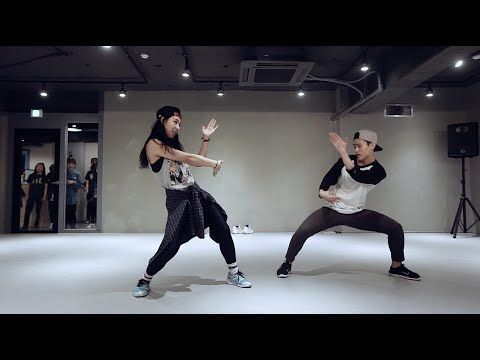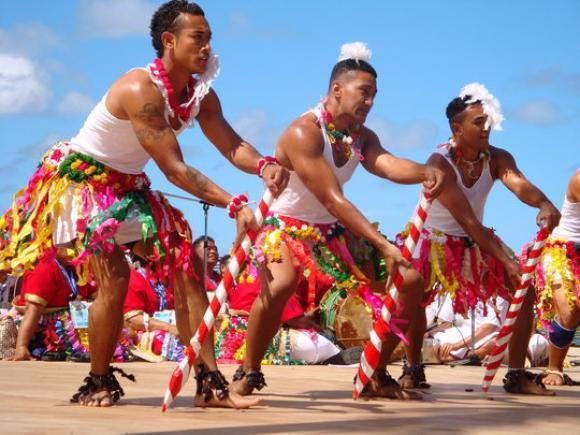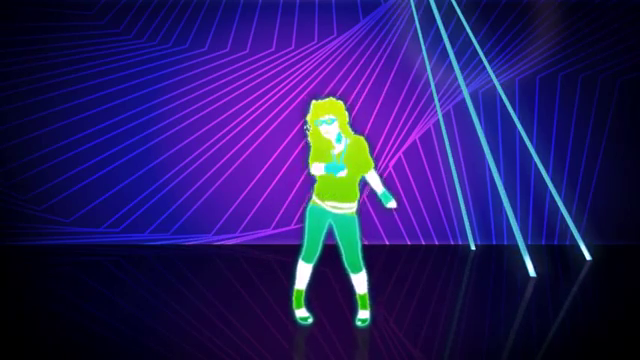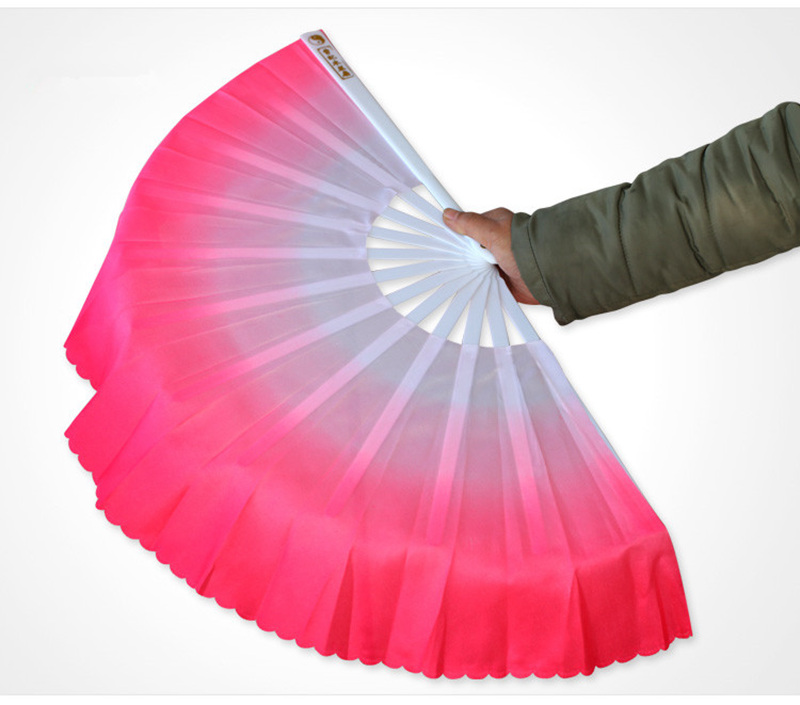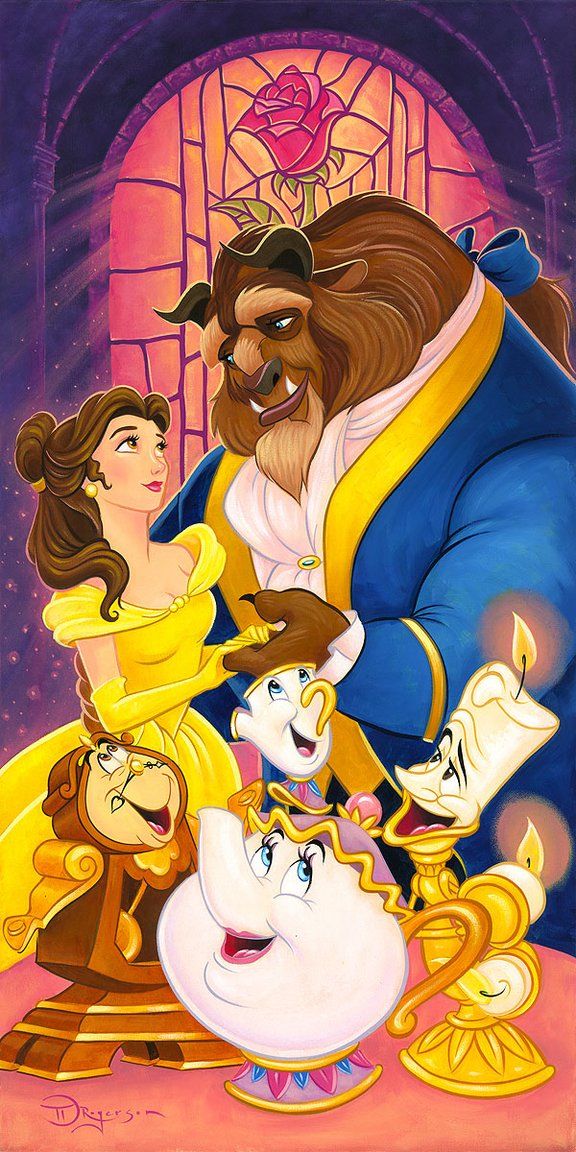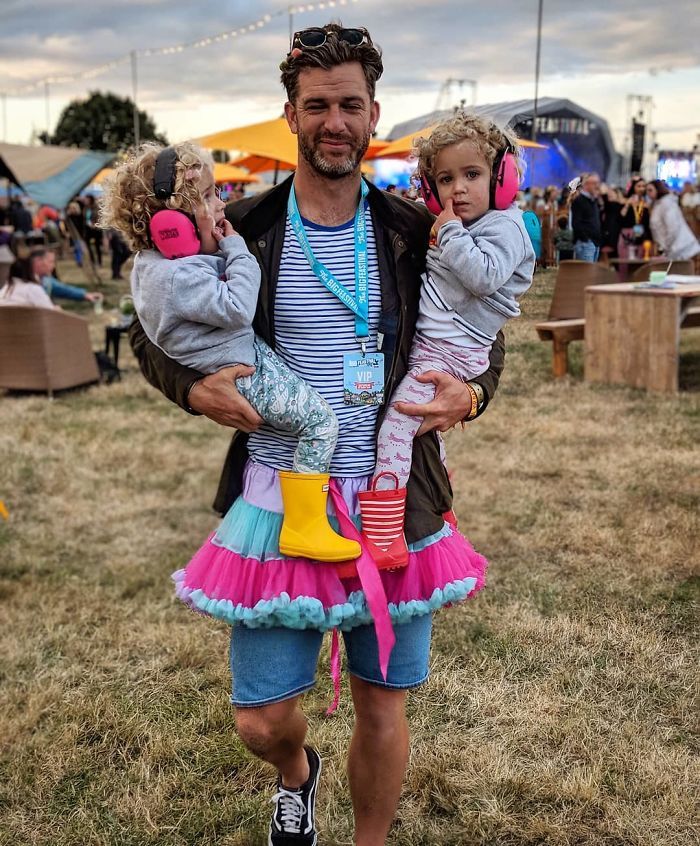How to dance choreography
10 Tips From the Pros
Creating movement from scratch to encompass the feeling, rhythm, and theme of a song takes a little imagination and some work, whether you're a beginner or getting ready for a big performance. When you're including the movements and dance phrases for multiple performers, too, choreographing a dance can get quite complicated. That's why we're giving you some top pro tips on how to choreograph a dance when you're feeling stuck, including methods you can use to step outside the box and spice up your routine.
1. Study the Music
If you know what music you want to choreograph your dance to, start studying. Go beyond creating movements based on the rhythm and beat of the song, and study the lyrics, the emotion, and the meaning behind the song. You can find inspiration from the feelings you get when you read the words, and embrace the emotion the artist puts into the song.
Poppin' C, a Swiss popping dancer, says, "The music is everything for me, because the way my body adapts and moves, is because of the way I feel the music. " By knowing every part of your music inside and out, you can design dance moves that really work with the beat and lyrics.
B-boy Junior holds a breaking workshop at Red Bull BC One Camp in Mumbai
© Ali Bharmal / Red Bull Content Pool
2. Watch the Pros
Take some time to watch dance-heavy musicals, like "Chicago" and "Anything Goes," competitive series like "World of Dance," and even street performers, like Logistx, to grab some inspiration for your moves. Observe the styles, transitions, and combinations of movements and note how pro dancers create a physical connection to the music. This can help motivate you to create dances that get the audience to connect with your physical interpretations of the music.
3. Plan for Audience and Venue
Think about who your performance or event is for. Consider the venue you're performing at, too, because your dance environment can help you find ways to creatively express emotion. Lighting, sound, and the overall ambiance of your venue can help you design dances that incorporate mood and emotion to connect with the audience during your performance.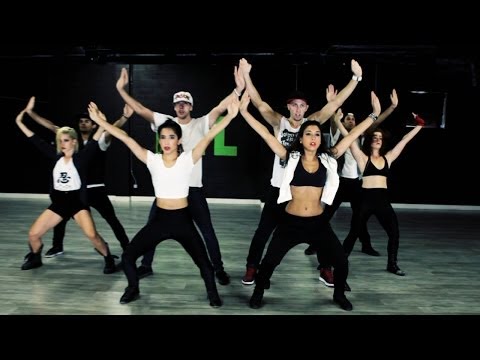
4. Think About Dance Style
Choreograph with steps and dance moves that reflect a specific style. You might try incorporating hip hop steps into a classical dance to mix it up and create your own unique dance style, for example. If you're just starting out with dance choreography, try focusing on learning how to balance a specific style of dance with your unique interpretation of the music you're dancing to.
Kid David poses for a portrait at Red Bull Dance Your Style USA Finals
© Carlo Cruz/Red Bull Content Pool
5. Focus on the Basic Elements
Focus on one (or several) of the most basic elements of dance: shape, form, space, time, and energy. For form, you can focus on designing phrases and steps based on a specific form from nature, like an animal or landform. Use your stage space to showcase explosive energy and give certain aspects of your performance a punch of emotion that keeps your audience engaged.
6. Don't Start at the Beginning
If you're stuck trying to figure out how to start your dance, plan it out from the middle or from the end.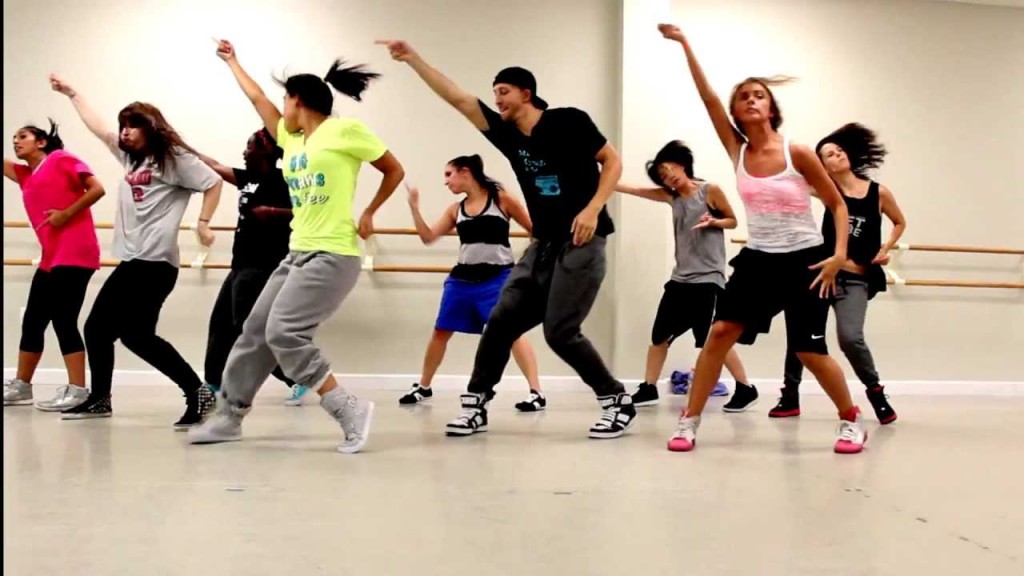 Tell a story through your dance choreography and plan out the climatic elements before the small steps to help you flesh out where you want to go with your ideas. Once you've outlined the basic structure of your choreography, piece it together into an entire work.
Tell a story through your dance choreography and plan out the climatic elements before the small steps to help you flesh out where you want to go with your ideas. Once you've outlined the basic structure of your choreography, piece it together into an entire work.
7. Try Choreographing Without Music
Dance in silence. It might seem like a crazy idea since you're choreographing the dance to a specific song. However, just letting your body move and flow with different tunes you imagine can help you step outside your comfort zone and incorporate challenging moves and dance steps that you might not have thought to pair with a song or score. When you discover something you like, pair it with other steps you've already developed and start fitting your moves to the music.
Poppin C shows off his moves during a photoshoot in Lausanne
© Torvioll Jashari / Red Bull Content Pool
8. Embrace Post-Modernism
Study early modern dance forms and styles that can get your imagination flowing. Dancers from the mid-century modern era through the 1950s and '60s (such as Anna Halprin, one of post-modern dance's pioneers) would incorporate a whole world of nontraditional moves in their choreography. Slow walking, vocals, and even common gestures can make imaginative additions to your overall work.
Dancers from the mid-century modern era through the 1950s and '60s (such as Anna Halprin, one of post-modern dance's pioneers) would incorporate a whole world of nontraditional moves in their choreography. Slow walking, vocals, and even common gestures can make imaginative additions to your overall work.
9. Incorporate the Classics
Use classical ballet, traditional ballroom steps, or other classic dance moves to mix up your style. It can be a startling transition for an audience to see a classical ballet step snapped in between freestyle phrases. Combining classical techniques with your dance design can add interest and suspense to your performances.
10. Use Other Art Forms as Inspiration
Don't just focus on music and dance. Look at all kinds of art forms, from two-dimensional paintings to live art performances. Take note of the different emotions and use of space, shapes, and forms that different artworks incorporate, and think about your interpretations and how you can convey that in movement. Use this as fuel for your inspiration when choreographing short phrases. Keep up to date on new forms of art to get inspired and avoid the dreaded writer's block (for dancers).
Use this as fuel for your inspiration when choreographing short phrases. Keep up to date on new forms of art to get inspired and avoid the dreaded writer's block (for dancers).
More Pro Tips to Choreograph a Dance
Arlene Phillips CBE, a British choreographer and theater director, got her start pro dancing and choreographing in the 1970s. She's been the choreographer for a variety of performances over the years, including live theater. Her advice for aspiring dancers includes some helpful choreographing tips:
Tell the music's story through your movements
Keep practicing with imaginative steps
Be determined to learn from your mistakes
Challenge yourself with unique rhythms, styles, and techniques
Plan out your most impactful elements then work in additional steps around those
Keep practicing your choreographing techniques
Don't be afraid to learn something new
One of the most important things to keep in mind when choreographing a dance, though, is to embrace diversity. Don't be afraid to do something different or outside the norm. Try incorporating new styles or steps to make your dance fresh, and study all types of art to get excited about your work. The more you challenge yourself to think outside the box, the more creative and unique you can be with your choreography.
Don't be afraid to do something different or outside the norm. Try incorporating new styles or steps to make your dance fresh, and study all types of art to get excited about your work. The more you challenge yourself to think outside the box, the more creative and unique you can be with your choreography.
15 Ideas To Help You Make Amazing Dance Choreography
There's no formula for making a supa hot fire piece, but there are dance choreography tips and tricks you can use to help make the process a lot smoother.
Here are some 15 choreography tips that'll help you make the best piece you can!
1. Focus on one sectionHone in on the section that you can see that perfect move or combo and branch out from there.
Or, break up the choreography into pieces (known as 'chunking') and just choreograph a little bit every day.
2. Budget your timeGive yourself a set schedule to choreograph – like a full week with two hour intervals.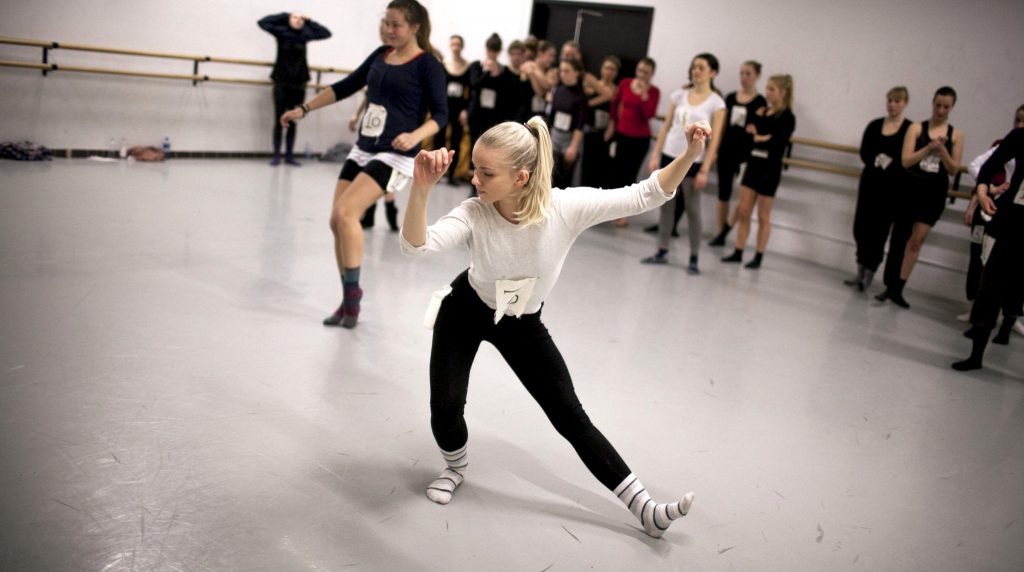
Don't just say "I'll choreograph later" every day and expect the piece to magically make itself.
3. Understand the music
Understand the song completely. The lyrics, meaning, beats, etc. I find myself stuck a lot when I would rush to choreograph to a song I barley listened to. But when I choreograph to a song that I connect with or know very well, my movements are more natural and carefree.
– Gina Hong
4. Do you
Be yourself! Don't focus on what's cool, but more on what feels good to you. The purpose of choreographing is to show your art and creativity.
– Devin Pornel
5. Collaborate with others
Working with other people to create a piece is one of my favorite things to do.You’ll be surprised by what you can learn from another person’s creative process.
– David Lee
6. Tell YOUR story
Don't choreograph to impress other people, do it to share a story. YOUR story.
– Tracy Seiler
7. Do weird moves
When you get stuck choreographing, try 'weird' moves- moves that make your body feel uncomfortable- or 'funny' moves- moves that help you get out of your head by just having fun with it. This allows your mind to create things that are new and creative. Keep changing up and that constant, somewhat dragging flow and you'll be surprised with what comes out of you.
– Michelle Shim
8. Be a character
What helps me most whenever I make a piece is I develop a character in my head. I give myself a reason, a motive, a feeling behind the piece.This will help you connect to the song and find some emotional attachment to your performance.
– Jaime Soriano
9. Trust yourself
Believe in your own abilities. Your very own, strictly organic, self-proclaimed abilities. A lot of us tend to have choreography blocks because we are investing too much time into what a piece should look like (based off of what we've seen from other choreographers), than what it should genuinely feel like.
– Mitch Villareal
10. Don't use videos as a reference
Watching videos is a great way to get inspired, but don’t just use them as a reference for moves.
Or else you'll just end up making a piece that's a patchwork of everyone else's choreo, rather than your own.
11. Dance to a different layer in the music
If you get stuck on the original pathway you were planning to follow, try highlighting a different layer in the music.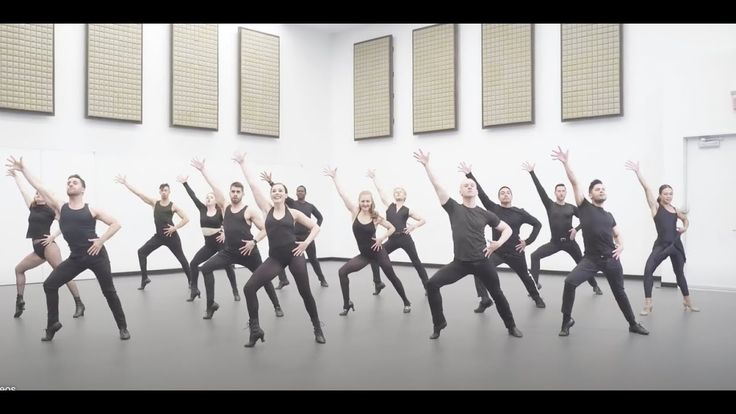
For example, forget the bass! What are the lyrics saying? How about the pitch?
Moving to different sounds will also help make your piece look more dynamic and less predictable.
12. Don't hit every single beat
Instead of moving to the most sounds, choose the right sounds. Be picky with the specific sound you want to follow.
You can groove through the rest or just have a moment in stillness, or milking the end of the last move.
Breathing through some sounds helps the audience (and your body) absorb a crazy sequence before or after that chill phase, and lifts some pressure off of the dance choreography process.
13. Utilize concepts to think of unique moves
Invent new moves based off of concepts. The potential for concept-based choreography is limitless, because your thoughts and ideas are limitless.
Just think of a word (or have someone give you one), and let that be your intention. You'll never run out of movement this way.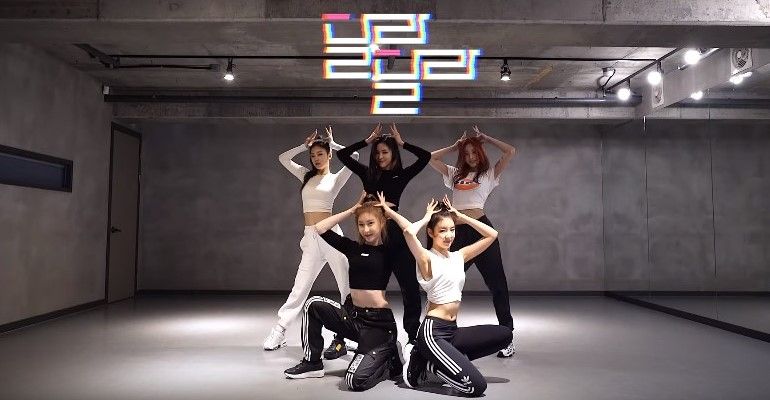
14. Take a break
Sometimes... the flow needs to pick up on its own. Instead of forcing it, take a break from your earphones and the mirror.
Do something else that'll refresh your mind and soul in a different way. Take a walk! Meditate! Watch a movie!
15. Watch this video when you hit choreo block
These 4 tips will help you get through that block!
We hope these dance choreography tips help! Can't wait to see the pieces you come up with.
Take class with your favorite choreographers to expand your vocabulary of movement and better understand how to piece moves together.
Sign up for STEEZY Studio and start learning!
90,000 12 life hacks, to quickly learn how to dance from Mamita DanceDances
Author: Pavel Gather
Psychologist, Lecturer Salsa and Tango
Dances
Author: Pavel Pavel
Psychologist, Lecturer Salsa
on At the start, you always want to get a quick result.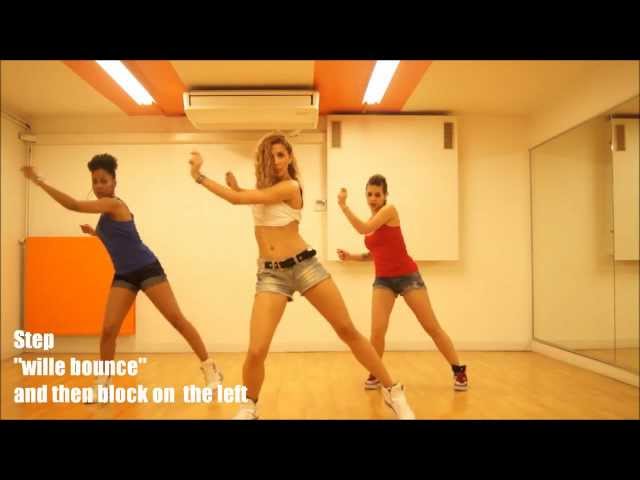 When it doesn't happen, the hypothesis arises that everything takes time. After a conditionally acceptable time, humility comes to mastering pair dances, which, perhaps, is not given, and I will just do what I learned somehow.
When it doesn't happen, the hypothesis arises that everything takes time. After a conditionally acceptable time, humility comes to mastering pair dances, which, perhaps, is not given, and I will just do what I learned somehow.
This is the most common story of those who believe that the mere act of attending a pair dance class is enough to learn how to dance.
Absolutely not. If you want to really dance well, you have to make an effort outside of the dance class. A good teacher will definitely be needed, but the initiative should be on your side.
1. Listen to music
The most common and accessible advice that is given already in the first lessons. And it definitely works. Music creates a certain atmosphere of the dance and intuitively you want to move to it. It doesn't matter where you listen to music - in the car, on headphones while walking or doing household chores.
An addition that will help you dance better is your active participation in the music.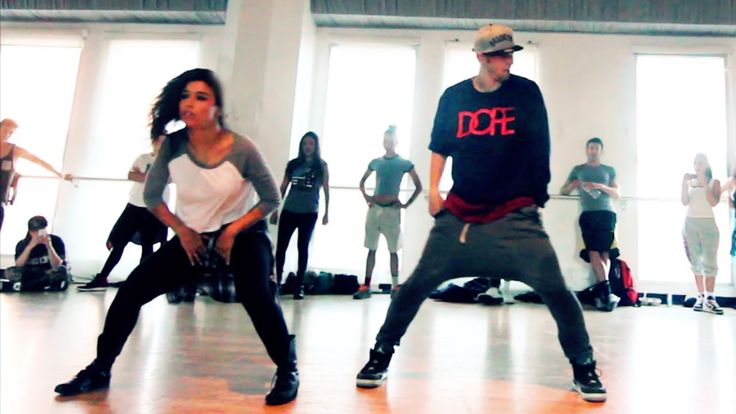 Sing along, dance or simply beat musical accents with any free parts of the body. In the subway, for example, it is enough to tap out bright moments with your fingers, in the car to sing along with sounds, and at home you can jump for pleasure.
Sing along, dance or simply beat musical accents with any free parts of the body. In the subway, for example, it is enough to tap out bright moments with your fingers, in the car to sing along with sounds, and at home you can jump for pleasure.
2. Watch videos of good dancers
It's complicated, but also obvious. It’s more difficult, because without recommendations from more experienced dancers, unfortunately, it’s not so easy to find a good quality video on the net (I mean not the resolution quality, but the content itself).
Meaningful video viewing is about building an understanding of HOW dancers make a particular impression on a partner or viewer. Technology is at the heart of everything. Understanding how the pros do it is a big step forward.
It is important to distinguish a show from a disco dance, a staged performance from an improvisation, a stylized dance from an authentic one, etc. Ask for recommendations and dance teachers will always throw off a couple of videos of worthy landmarks.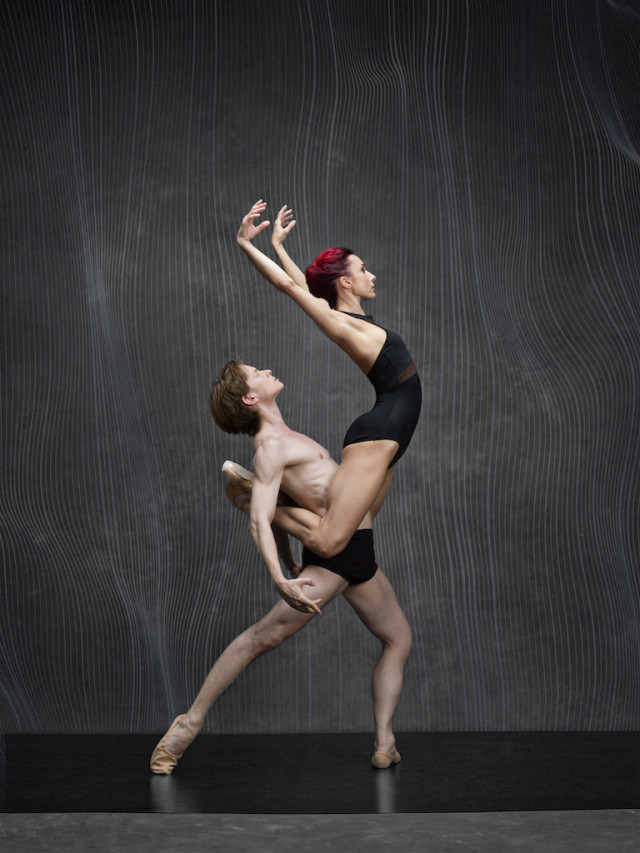
Tango Z. Showreel.
Online modern tango courses
Tango nuevo is the most advanced version of tango. We can quickly learn to dance from zero to a steep level.
| View details |
3. Dance in salsatecas/milongas/discotheques
A very delicate moment when it is worth coming to the first party. From a technical point of view, most students in 1-3 months have a sufficient set of figures and techniques to come and dance calmly. Psychologically, the same moment can be stretched out for an indefinite time. After all, it is imperative to “not lose face”, “learn more figures” and be sure what to do in case “there is an unfamiliar movement”.
In fact, the partygoers don't really care (except for a small layer of non-professional teachers who want to help inexperienced dancers by treating them as customers in the future). It is important to come and try dancing after a month of classes. You can only with friends or guys from your group. This will be enough to feel the adrenaline and inspiration from the dance.
You can only with friends or guys from your group. This will be enough to feel the adrenaline and inspiration from the dance.
4. Dance with partners or partners not of your level
The conventional wisdom that you need to practice in groups of your level does not withstand the test of experience. Perhaps now your eyes widened in surprise, and you want to meaningfully read the phrase again. Yes, you saw everything correctly: when you dance with a partner of your level, you don’t grow anywhere.
It's important to understand that not only does it work one way and you have to dance with cooler dancers, but it works even more effectively the other way. It is no coincidence that teaching pair dances dramatically raises the level of the teacher himself. You have an endless stream of very beginner dancers.
How it works. A more experienced partner needs to be "stretched". It's easy and obvious. With beginners, you need to take more initiative on yourself, see the general pattern of the dance more widely, turn on and insure more, try to be an example and be more careful. The quality of interaction begins to grow significantly. And wonderful partners too.
The quality of interaction begins to grow significantly. And wonderful partners too.
Dancing with partners of your level doesn't make you grow. Dance with both beginners and more advanced dancers
Dominican Bachata Women's Style Online Course
Want to learn how to hypnotize those around you with the most appetizing part of your body? On the course we will tell you all the secrets.
| Interesting |
5. Learn to dance for a partner and for a partner
Turks and Argentines are one of the best partners in the world. In Russia, partners are highly valued. Why? The answer is simple. In Argentina and Turkey, it is not questionable for men to ask another man to lead in one piece or another and give feedback on the quality of the lead. For them, it will be a great shame to hear moralizing from a partner, or even more so to be known in the community as an insecure partner.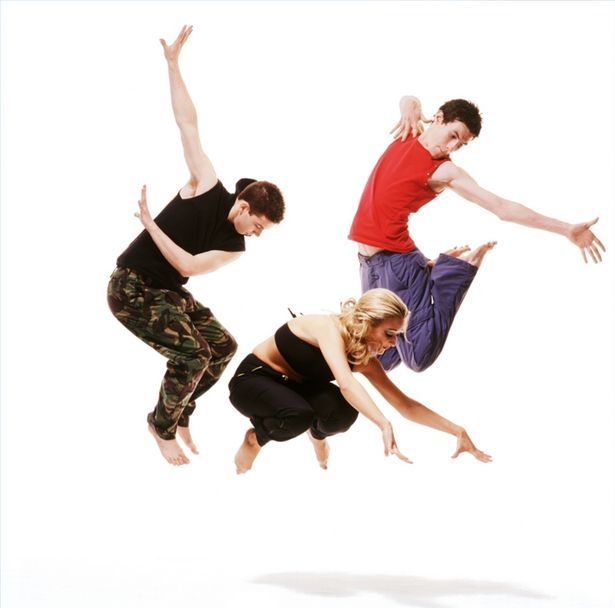
In Russia, due to the constant, often far-fetched, opinion that there are more women in pair dances, partners calmly get up and study their partner's part. Such partners then grow into very cool dancers and teachers. In no case do this at parties, only in class. Here we are talking only about the learning strategy. At parties, be yourself.
6. Do not memorize the links
Always try to look deeper and understand the through principle and idea of movement. Understanding what and how is done will make it possible to independently generate any sequences and chips.
Human memory is limited and there will always be a moment when something will escape and your repertoire will be limited by the size of RAM.
In Argentine tango, for example, there are seven levels of movement construction that, when mastered, will allow you to make millions of combinations. And how many dance sequences can you really remember? In rueda, more than 150 figures dance in a rare circle.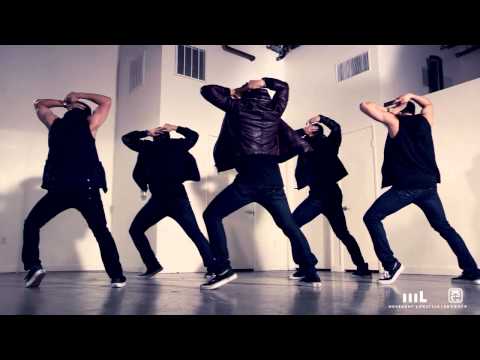 It's hard to keep more in mind.
It's hard to keep more in mind.
7. Develop your body
Many years of experience in teaching couple dance shows that as soon as everyone pairs up in a class, any progress in individual style ends. But it is the individual style that distinguishes everyone at the disco: partners change, and style is always with you.
The body as the main instrument of dance must be very plastic, responsive and emotional. Surprisingly, not all pair dance schools have a general physical warm-up. It is vital to tune the body and understand how it works.
You can always train extra and concentrate more on the basic steps, as their true value is as body work. The sequence of steps is, in fact, the simplest thing that can be in pair dancing. The quality of individual performance determines the craftsmanship.
8. Try on the images of inspiring dancers
A psychological life hack for those who have already mastered the steps, but still feel that there is not enough brightness and drive.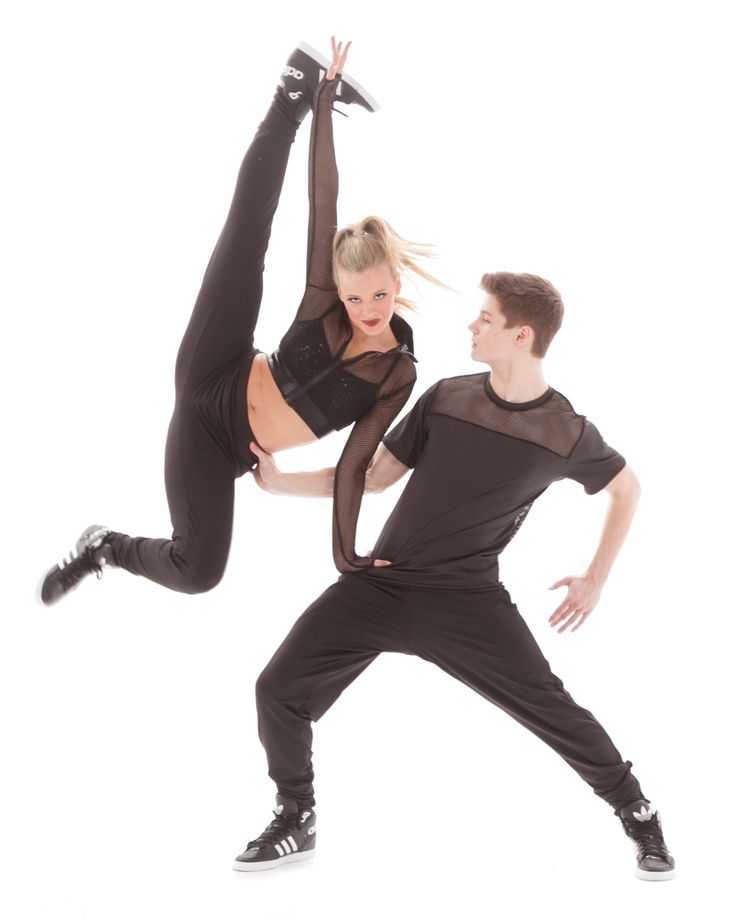 Most are terribly afraid of being someone else's "clone". Here the action is the same as under the influence of hypnosis - the more you resist, the more you plunge into an altered state of consciousness.
Most are terribly afraid of being someone else's "clone". Here the action is the same as under the influence of hypnosis - the more you resist, the more you plunge into an altered state of consciousness.
With a high degree of probability, you are already dancing like someone else's "clone". A meaningful fitting of someone else's image is that you mentally take the image of the one who inspires you (inspiration is critical in this case) and "put on" yourself. Then you start dancing and trying to feel in general how it is to be able, for example, to be the best partner or the sexiest partner in a disco. This is much more difficult than it seems. But it works extremely efficiently.
9. Dance to offbeat music
Habitual rhythms keep you tight. Tango salon or speedy timba leave little room for experimentation and fantasy. Pattern dancing is always noticeable and is reserved for beginners.
The truly new is born outside of the usual. Look for places to experiment. If there is no place, organize self-training. The main thing is not to get carried away, because music determines the style. We bring something new to pair dances, rather than trying to change them.
Look for places to experiment. If there is no place, organize self-training. The main thing is not to get carried away, because music determines the style. We bring something new to pair dances, rather than trying to change them.
Search, improvise, don’t be afraid to go beyond, develop in different directions, be inspired by music atypical for the style
10. Try your hand at basic dance directions
dances exist according to their own non-choreographic laws.
This is the deepest delusion, which has turned into a ceiling for the qualitative development of partner dances. After all, all professional dancers, for example, in salsa or bachata, build their ideas on the basic choreographic principles.
Do not think that choreography is only applicable on stage. Any meaningful movement of the body can be choreographic. In general, try classical or modern choreography. Basically, hip-hop can work too.
11. Look for battle sensations
Pair dances return us to an active position of manifestation of our body. As in the days of our ancient ancestors, we impress the members of the opposite sex by how dexterous, hardy, sexy, etc. we are. Modern laws of the jungle in the entourage of big cities.
If you look around the dance floor, it becomes clear that the majority are clearly herbivores (not in the sense of vegetarians, but in relation to those around them). I am sure that predators are always more interesting in terms of the attractiveness of the image - try to find a counterbalance among herbivores, for example, a cat woman or a lion man.
The conversation is about an internal position, not about aggressiveness. Lability and lack of control are inherent in adolescents, and not in adult self-sufficient people.
Accordingly, even a training or friendly battle gives, on the one hand, practical skills - to make a bright sequence of movements, bring an idea to a climax, show a spectacular feature, on the other hand, develops the psychological basis of the dance - self-confidence, resistance to extraneous attention, self-control and self-control in complex elements.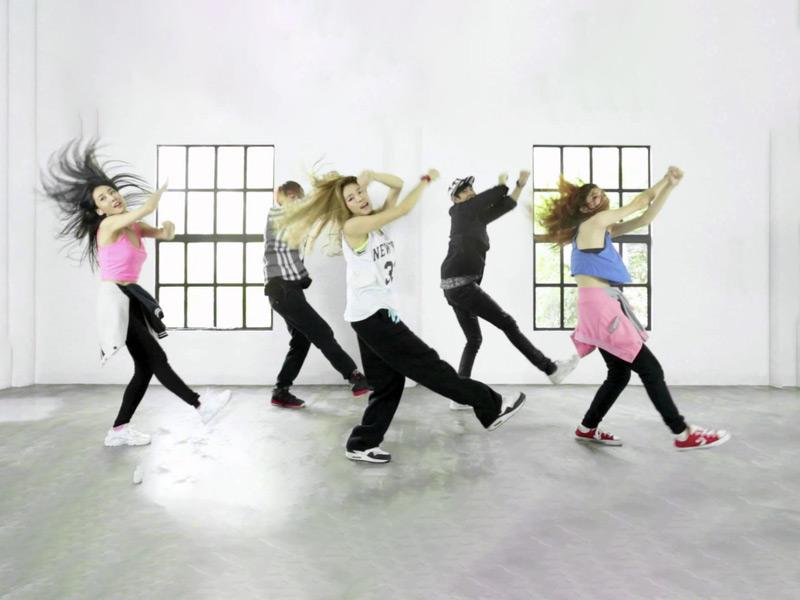
12. Communicate with professionals
The environment shapes the internal position. Basically, real passionaries of the dance community are ready to openly talk, discuss and support the development of dance in every possible way. Universal principles and the ideas they articulate have a much longer and more practical perspective than meets the eye.
Accept that, for example, behind the words "listen to your partner" is not only a beautiful metaphor, but also a practical skill to literally listen to your partner. At the same time, always treat every thought, even the most respected teacher, as a private opinion.
Your skill will lie in finding the scope of the idea even in conflicting opinions. Most often, the contradiction is speculative and the truth lies in the angle of perception or situationality.
Your dancing growth will stop sooner or later. This can happen at the level of three basic steps or years of experience in teaching and show performances.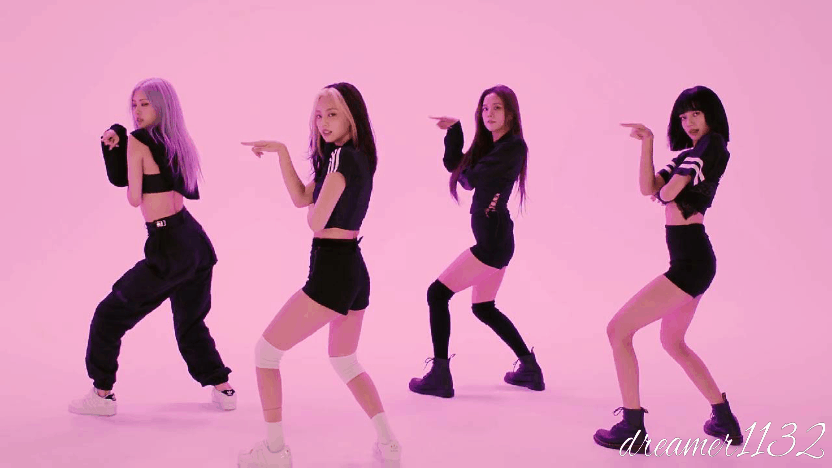 Regardless of your level, the suggested 12 life hacks can get you off the ground and greatly accelerate your dance growth. There is no way here without your motivation and activity. Take your dance development into your own hands. 9Ol000 Dangerous sexuality
Regardless of your level, the suggested 12 life hacks can get you off the ground and greatly accelerate your dance growth. There is no way here without your motivation and activity. Take your dance development into your own hands. 9Ol000 Dangerous sexuality
Salsa: destroyers of stereotypes
Couple dancing as a source of strength.
Self-destruction of the couple dance community
The Salsa series as a mirror of the community
Mamita Fridays: salsa, bachata
Destroying the myths about leading pair dances
Does dancing make us better?
The seven deadly sins of teachers
Why we will never dance bachata like the Dominicans
Why tango?
Dispute over musicality
Selection of dances according to alcohol preferences
Where to find inspiration for dancing?
Terrible tango nuevo
Distribution of roles in a salsa party
Argentinean tango through the eyes of a salsa dancer
Is there a predisposition to dancing?
Which is more effective: individual or group lessons?
Sexual overtones in couple dances
Features of choreography
There are many different dance styles that differ from each other in tempo, rhythm, mood and many other features.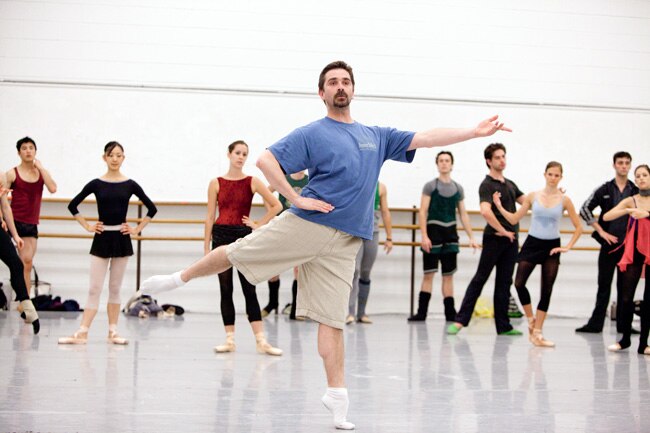 However, the basis of all dances without exception is choreography. In choreography classes, children learn to perceive music correctly and combine it with their movements, acquire basic skills of grace and plasticity, strengthen their health, both physical and mental.
However, the basis of all dances without exception is choreography. In choreography classes, children learn to perceive music correctly and combine it with their movements, acquire basic skills of grace and plasticity, strengthen their health, both physical and mental.
The choreography for toddlers is presented in an accessible and exciting way, for older children the classes have a more complex structure. In these lessons, children perform exercises aimed at the harmonious development of all muscle groups. In addition to strengthening health and acquiring a beautiful body, choreography lessons also correct character. Whims, uncertainty, excessive shyness are eliminated and responsibility and self-organization, self-confidence and self-confidence are acquired. In addition, being engaged with other children, the child develops his communication skills.
Choreography lessons consist of three main components:
- Elements of classical dance.
- Improvisation.
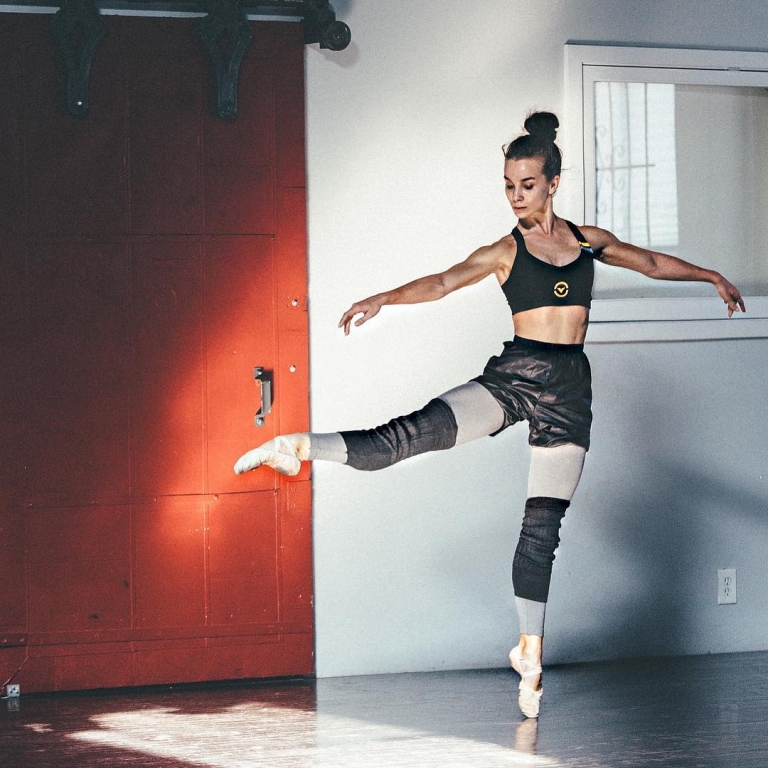
- Ballet gymnastics.
Choreography lessons provide basic skills that form the basis of all dances without exception, they teach you how to move and feel the music. By combining dance lessons with choreography lessons, you can achieve maximum effectiveness and efficiency. Or later, serious classical choreography classes can develop into professional activities when a child enters a ballet school and devotes all his time to the chosen business.
The basis of choreography classes is classical dance, which helps to understand all the subtleties of dance art, learn how to move correctly and harmoniously and feel the music. Classes are held at the choreographic barre, and skills are reinforced by regular training. Such lessons develop flexibility, endurance, coordination in children, strengthen muscles and the musculoskeletal system, form a general culture of movements and allow you to perform any dance movements beautifully and confidently.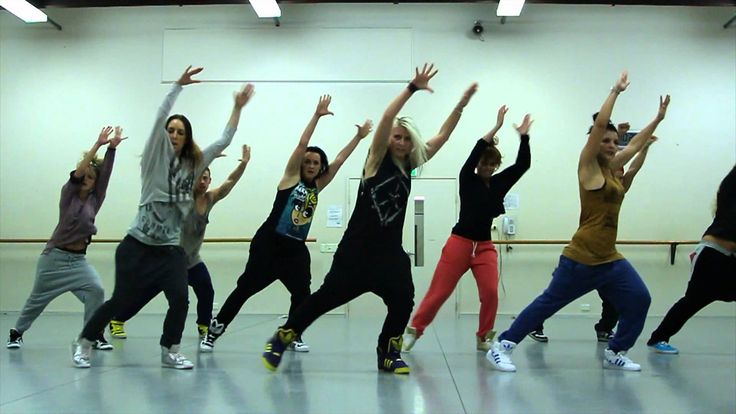 Classes in classical dance form a beautiful, even posture, correct mild cases of curvature of the spine, develop muscles and eversion of the legs, elasticity of the feet. At the lessons, children learn to position their hands and head, acquire the ability to properly hold the body, correctly distributing weight on their legs, thereby training stability and agility and acquiring a toned, beautiful figure. In training, the rhythm of movements develops, the ability to move along with the rhythm of the music, maintaining its different tempo.
Classes in classical dance form a beautiful, even posture, correct mild cases of curvature of the spine, develop muscles and eversion of the legs, elasticity of the feet. At the lessons, children learn to position their hands and head, acquire the ability to properly hold the body, correctly distributing weight on their legs, thereby training stability and agility and acquiring a toned, beautiful figure. In training, the rhythm of movements develops, the ability to move along with the rhythm of the music, maintaining its different tempo.
In addition to elements of classical dance, improvisation is an important component of choreography lessons. In addition to teaching dance technique, children are taught the ability to fantasize and experiment while performing a dance, not being afraid to go beyond the rules and norms. The ability to improvise is to dance confidently, avoiding memorized schemes, connections and combinations. However, at the same time, any improvisation is based on the technique of classical dance in order to look organically with each other. Technique and improvisation should complement each other, harmonize and combine, otherwise improvisational moments will look unprofessional and inappropriate.
Technique and improvisation should complement each other, harmonize and combine, otherwise improvisational moments will look unprofessional and inappropriate.
Using the acquired skills, the dancer is able to liberate his movements and body in general, diversifying the dance pattern and making it more interesting and exciting. Properly constructed improvisation can enrich the dance and make it more spectacular. The skills acquired in the lessons greatly develop fantasy and imagination, stimulate abstract thinking.
An equally important part of the lessons is ballet gymnastics - a comprehensive exercise program aimed at strengthening muscles, correcting posture, acquiring body tone, developing grace and harmony of movements. Ballet gymnastics includes many exercises aimed at developing all parts of the body. Separate exercises strengthen the back and align the posture, develop and strengthen the press, help turnout and prevent flat feet. This complex helps to get a beautiful, slender figure, improve health and improve well-being, and given the fact that training takes place without any exercise equipment and weight lifting, excessive stress on the spine and joints is eliminated. All types of exercises are performed on the floor and thereby relieve the load from the back, allowing you to focus on working out certain muscle groups. Regular training helps to acquire a good stretch and developed strong muscles.
This complex helps to get a beautiful, slender figure, improve health and improve well-being, and given the fact that training takes place without any exercise equipment and weight lifting, excessive stress on the spine and joints is eliminated. All types of exercises are performed on the floor and thereby relieve the load from the back, allowing you to focus on working out certain muscle groups. Regular training helps to acquire a good stretch and developed strong muscles.
Choreography lessons give the basic skills that form the basis of all dances without exception, they teach you how to move and feel the music. By combining dance lessons with choreography lessons, you can achieve maximum effectiveness and efficiency. Or later, serious classes in classical choreography can develop into professional activities when a child enters a ballet school and devotes all his time to the chosen business. If you want to see your child fit, beautiful, healthy and successful, choreography lessons are what you need!
Comfortable conditions
Your choice is in favor of our dance and sports school!
We have 3 modern dance halls, separate locker rooms, waiting area
Free classes
Free trial class for EACH direction.